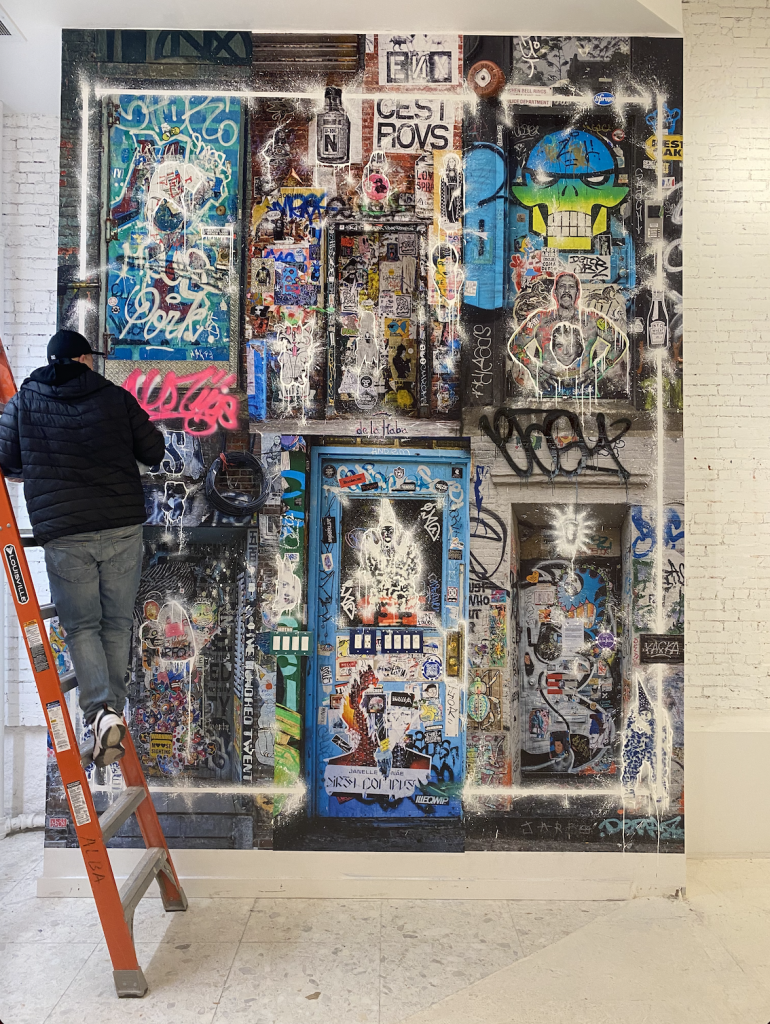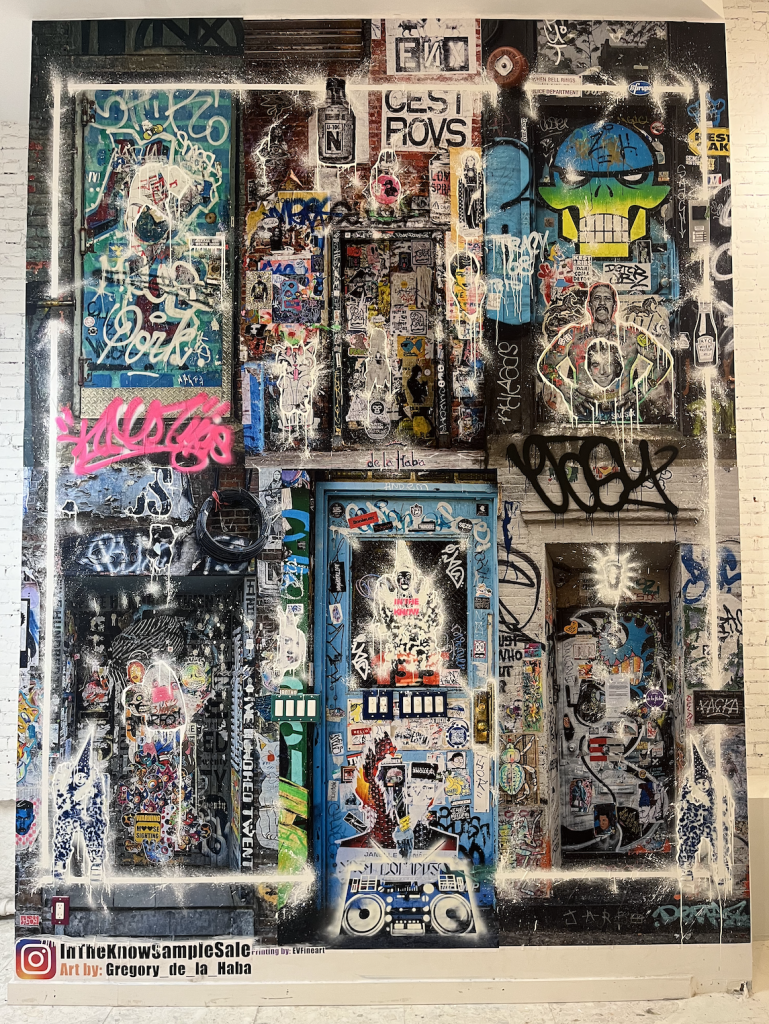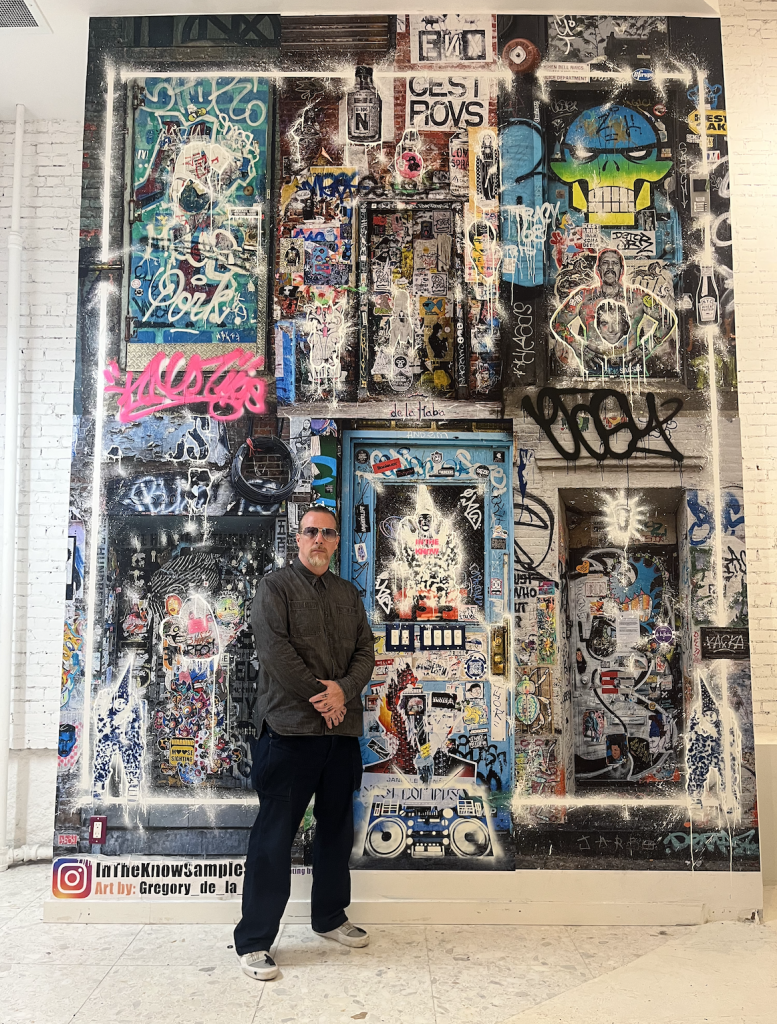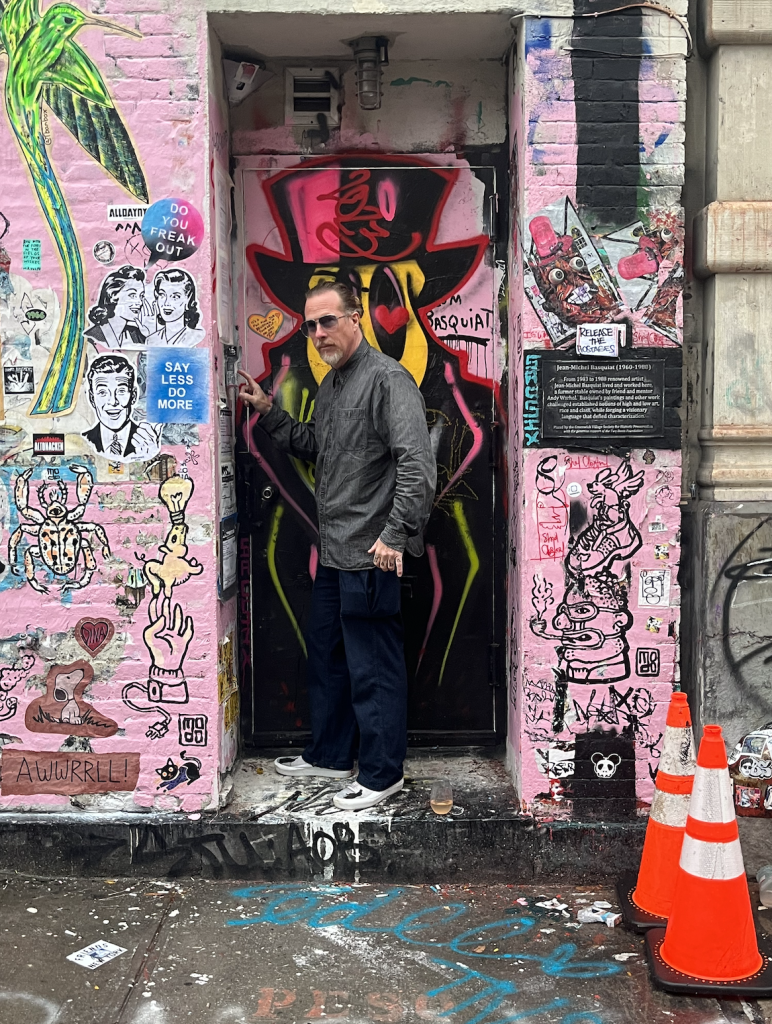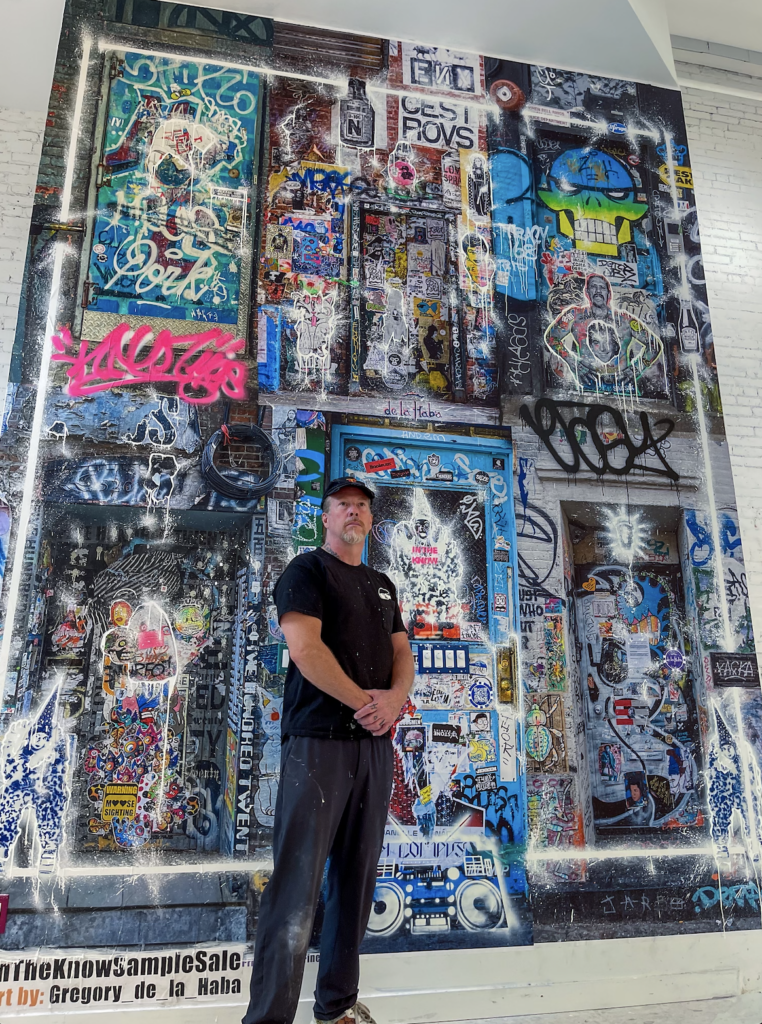
Gregory de la Haba isn’t a thief, he’s a proliferator.
De la Haba, a New York-based artist currently showing new paintings in exhibitions in various cities around the world, shared an Instagram post on October 24th, 2023 featuring a new artwork that collages and composites six doors and entrance ways that still exist in some form around the five boroughs, all covered with years of tags, stickers, graffiti and other street detritus, going as far back as 2009, when de la Haba started photographing them for posterity.
As of this writing, the post has 109 comments, many of them from street artists-some quite salty, some pleasantly titillated. The debate concerns de la Haba creating a massive hi-res photographic print that blends and remixes 14 years of his own photographs of these various doors, some more iconic than others, like the door to Jean-Michel Basquiat’s famed studio at 57 Great Jones Street in Manhattan, where he died. Inciting further ire from several street artists whose work can be seen in the photo collage, is the fact that the large-scale print is actually indoors. The work looms large in the back right corner of In the Know, a new retail shop on the northeast corner of Broadway and Bond, past several racks of plastic-wrapped bridal gowns.
“I started shooting the street in 2009 at Jack the Pelican (Presents) on Driggs Street,” de la Haba recalls, alluding to the storied gallery space that closed in 2010. “I was the artist in residence there. Everyday I was walking in and there would be a whole new image on the door. Eventually, a new owner took over and threw the door out. He installed a new glass door. This is why documentation of these ephemeral moments is important.”

The piece and its somewhat public display evokes a dash of the artist Richard Prince, who saw a judge reject his fair use defense in his long-running legal battle over his somewhat iconic Instagram series, New Portraits, in May this year. The case would go to trial, as Prince’s repurposing of the photographer Donald Graham’s Rastafarian Smoking a Joint, which appeared in Prince’s Untitled (Portrait of Rastajay92), for instance, was not sufficiently transformative enough to shield the artist from copyright claims. Prince first showed the large-scale works at Gagosian Gallery’s Madison Avenue space all the way back in 2014. The series pulled images directly from other people’s Instagram accounts, some of them artists like Graham, and deliberately without asking for their permission. In September, the US District Court for the Southern District of New York ruled that Gagosian is not liable for profits made from the artist’s contentious New Portraits series, and Graham’s quest for recompense was thrown out. The larger case continues, however, and will surely continue to morph and escalate.
“All I see that I’m doing is documenting the ephemera of the street, something that’s changing every single day,” de la Haba explains while in front of his towering print, which, though existing in a weird location, is actually an impressive, hi-resolution photographic collage pulling from 14 years of documentation. “I’m changing it by capturing it. I’m incorporating it into a giant collage that’s a celebration of everything that’s beautiful outside and open to the public. I’m making something ephemeral, but also something that will last much longer.”
De la Haba invited Easy and kit17, two respected graffiti writers to tag the indoor piece after it was installed. Both can be seen in de la Haba’s Instagram post.
“It was a pleasure being a part of this great, well done project,” kit17 offered.
“His incredible installation is reminiscent of when I first started out,” says Easy. “The work as a whole gives the younger generation a sense of how New York and the subways were plastered during the ‘80s and ‘90s.”
De la Haba’s first image on his Instagram post is a bit misleading, to be fair, as it does look like he’s standing on the street and claiming the door, the larger wall, and all the art and ephemera for himself. Within In the Know, while standing in front of the work, de la Haba points to an intimidating green skull, a work by artist Matt Siren(sometimes spelled with lowercase lettering). “I love his work so much,” de la Haba says of Siren. “I said to one of my friends, ‘Do you know this guy?’ I reached out and bought a piece from this artist that is now in my collection.”
UP Magazine reached out in good faith to Matt Siren and many other street artists that commented on Greg de la Haba’s Instagram post, including some of the work’s most vocal and seemingly bellicose detractors. All declined to comment. The stark minority that initially expressed interest failed to follow up.
A few swipes on the Insta post in contention brings greater clarity to what’s actually going on. When viewed in person, the work is quite large in scale and rather sophisticated in execution. The piece stands as a complex scavenger hunt featuring a galaxy of images from hundreds if not thousands of creators, many of them remixing and repurposing other people’s imagery, aesthetic and likeness. Even next-gen OG Shepard Fairey pulled (stole? borrowed?) from John Carpenter’s They Live while transmuting Andre the Giant’s highly-recognizable visage.
Agitation is a big component of street art. De la Haba is just serving up a taste of their own street medicine, outside-in, albeit with a spoonful of brick and mortar retail sugar and a classic art trope, Trompe-l’œil. The piece calls into question, not just to what degree graffiti and street art are trolling in some form (stick it to the wall-stick it to “The Man”), but whether a huge swath of Contemporary Art is some form of troll, from social justice “front” posturing to ridiculous, exorbitant prices on “My kid can do that” paintings later pumped up on secondary markets. Was Richard Prince not trolling a bit; the contemporary scene, other artists, collectors, his dealer; us?
It can be a bit jarring, perhaps intimidating, when a well-versed contemporary artist, painter, publisher, and general renaissance man challenges street ethics and the street artists who attempt to uphold some kind of moral code; artists and makers who talk big-game-authenticity but are more often than not quite quick to slap their aesthetic, inevitably forced and diluted, across various retail items while lusting after the prestige of pre-stretched canvas, gallery representation, and all the press that comes with pretentious white box mojo (see street art legend Futura2000’s 2022 show at Eric Firestone). With this work, De la Haba, who was a major supporter of the late Lance de los Reyes (Rambo), proved the street has its pretensions too.
“Artists are gonna come in here and slap stickers on it,” de la Haba says of his massive mosaic ode, this monumental montage in six quadrants; this overall homage to the street, but in this case, a paid commission from a guy hosting prime NoHo retail space to sell wedding dresses. “They’re welcome to. I want it to be a living breathing thing. But if they really have a problem, then they should keep their stickers in their studio and not put them out into the public domain.”
Kurt McVey is a writer, artist, curator, and performer living in New York City. He has contributed to The New York Times, T Magazine, Interview Magazine, Vanity Fair, PAPER Magazine, ArtNet News, Whitehot Magazine, Architectural Digest, Cultured, Forbes, Quiet Lunch, Hyperallergic and more.
Insta: @whyankombone
